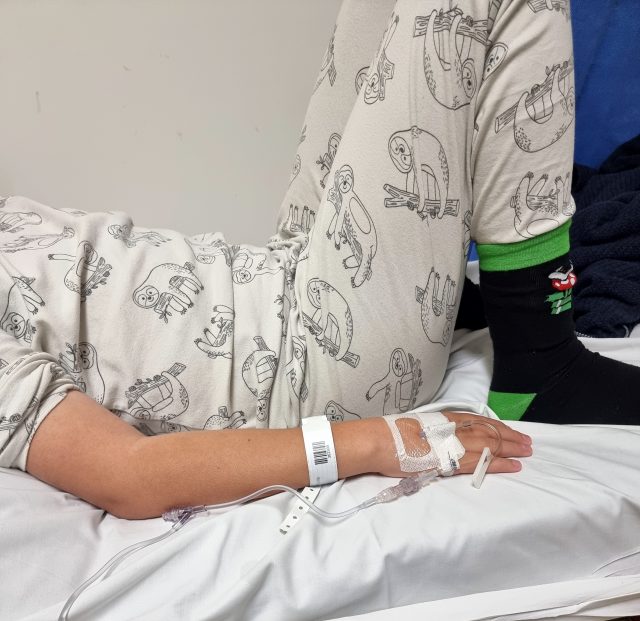One of the things I’ve always struggled with as a parent is how to judge when your sick child is sick enough to need medical attention, particularly if it is a potential hospital visit. Oh, the deliberation. Are they really sick enough to warrant tying up resources in an emergency department? Maybe we should wait till the morning and try and get a GP appointment (kids notoriously always deteriorate after office hours!)? Well, chuck in that child and their parent (me!) being COVID-positive and that mental load only gets heavier.
Yes, the spicy cough darkened our door this week and my 12-year-old has copped the worst of it, including a horrendous bout of prolonged, continuous vomiting that left him dehydrated and needing medical attention. I tried everything to avoid needing to take him to hospital, but we’ve been down this path before and after the usual treatments didn’t work, I knew there was nothing short of an IV that was going to fix him. I was anxious about what kind of hoops we might have to jump through to receive treatment, but overall, the process was pretty similar to going to hospital without COVID. I do have some tips however that others might find handy:
- If you have checked out the COVID symptom checker on Health Direct or the Coronavirus website, don’t bother following up with a call to the hotline for clarification. They literally just run through the same website with you. And the outcome decision for this set of symptoms – reduced fluid intake/urine output – was to call an ambulance! Which seemed over the top, especially considering the on again, off again warning of ambulance delays we have been experiencing.
- I thought there would be stricter rules or information about what to do when presenting to hospital with COVID – a different entry point, maybe – but there wasn’t. Basically, wear your mask, keep your distance from people in the queue, then tell the first nurse you see you have COVID. You will be sent to the COVID-positive corner of the triage area. They stop short of painting a scarlet letter on your forehead, but you do feel a bit exposed and as though strangers already know too much about your medical history when you’re sat under a bright red ‘COV POS’ laminated sign.
- Be prepared for an even longer wait than usual, as you can only be treated in an isolation room, and there are not many of those. I can see a lot of resources went into setting up screening facilities and procedures for people coming to the ED, but it didn’t appear like there were any upgrades (i.e., more isolation rooms) made to the ED in order to treat COVID-positive people.
- If you don’t have COVID and need to go to the ED for other reasons, be aware that you will be in an open area with COVID-positive people while in the triage tent, and awaiting rapid antigen testing before moving into the main department. The area was ventilated to an appropriate standard, and we were at least 2 metres away from any other people. I was wearing my N95 mask, however my sick child was only able to have his on when not vomiting, and I was also free to move about both the triage area and the ED to use the toilet (I checked before doing so as it didn’t seem right).
- Pack some snacks and water – late night hospital runs for us have often included a midnight coffee from Maccas on the way home, but you can’t do that when you have COVID! I’d also recommend making sure you have enough petrol on hand for a return trip to hospital if needed.
- Finally, health care staff are the bomb. I feel like I’ve spent two years calculating and weighing up the risk of contracting COVID with every human interaction; these guys just whack on their PPE, walk into a room full of people with COVID and get on with the job.
Keep safe and well!








